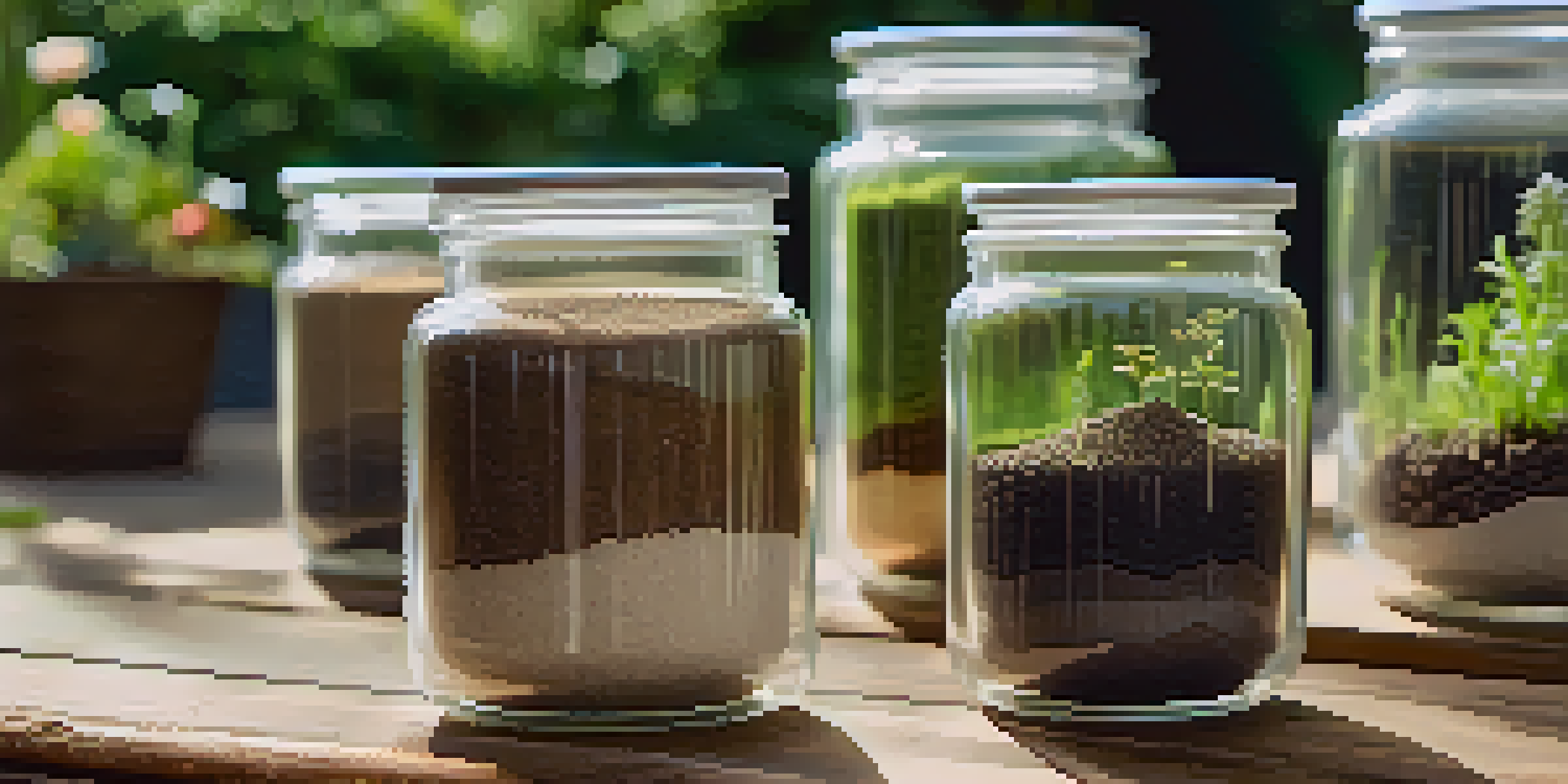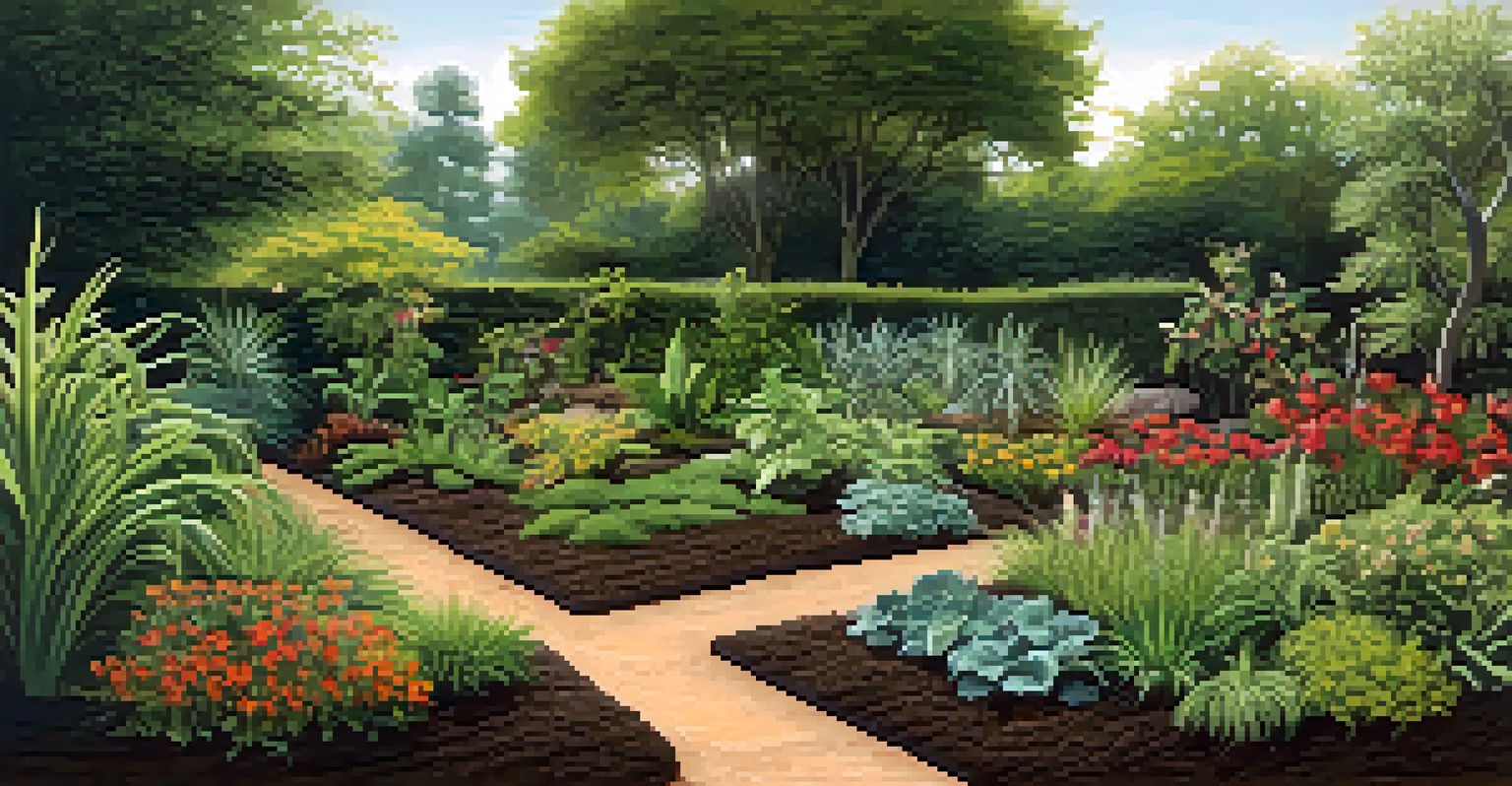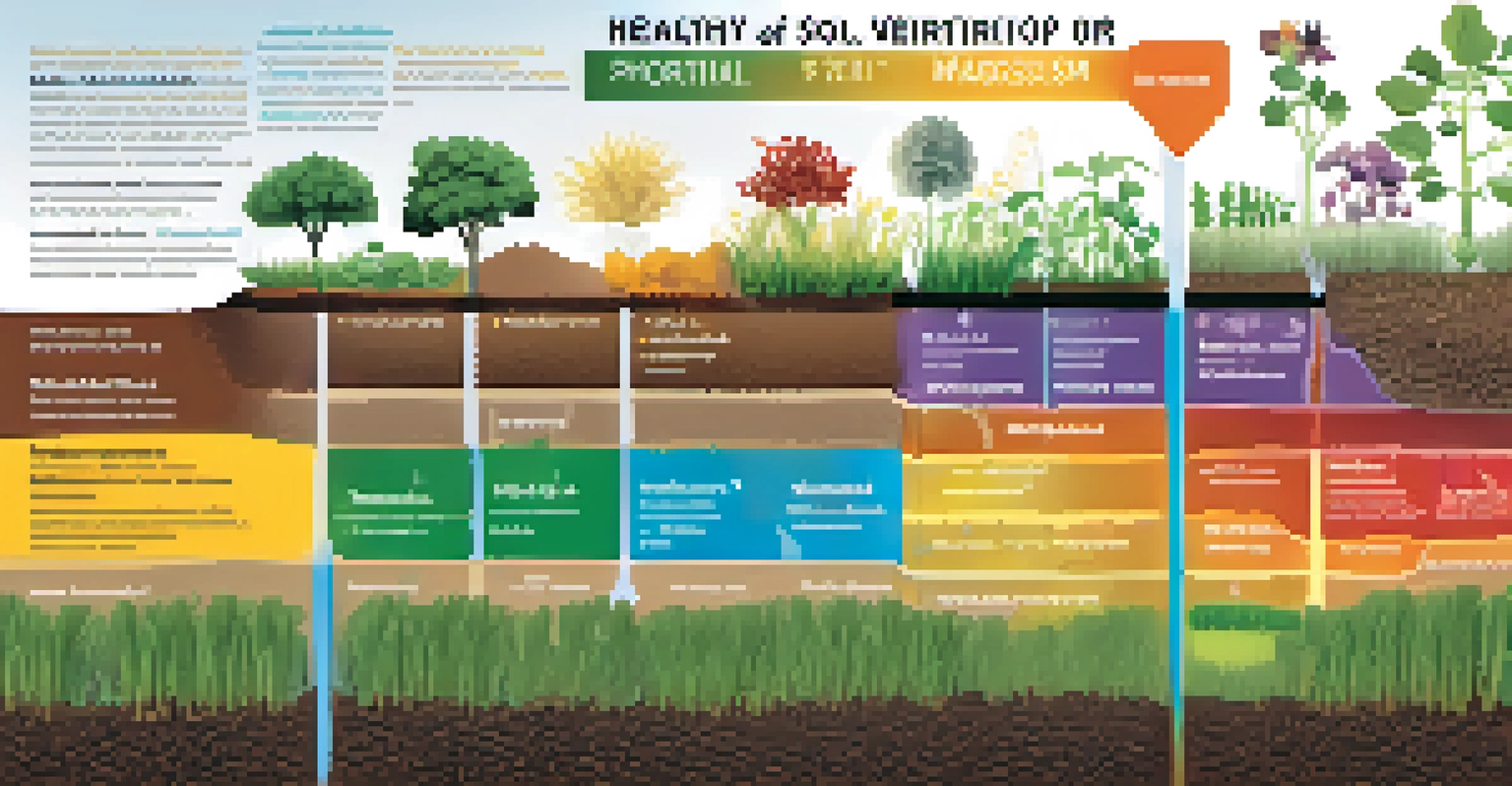Understanding Soil Types for Optimal Plant Health

The Importance of Soil Types in Gardening
Soil is often referred to as the foundation of plant health. Just like a building needs a solid base, plants rely on the right soil to thrive. Different soil types provide different nutrients, drainage, and support, which are crucial for various plant species.
The health of soil is vital to the health of the plant, and ultimately to the health of the human being.
Understanding soil types helps gardeners make informed decisions about what to plant and how to care for their garden. For instance, certain plants flourish in sandy soils due to better drainage, while others prefer clay soils that retain moisture. This knowledge can make all the difference in a garden's success.
Related Resource
By recognizing the importance of soil types, gardeners can create optimal conditions for their plants. Whether you're a beginner or a seasoned green thumb, knowing your soil can unlock the full potential of your garden.
An Overview of Common Soil Types
The primary soil types include sandy, clay, silt, loamy, and chalky. Sandy soil is light and drains quickly, making it great for drought-tolerant plants. In contrast, clay soil is dense and retains moisture, which can be beneficial for plants that love wet conditions.

Silt soil is a middle ground, offering a balance of drainage and moisture retention, while loamy soil is often considered the ideal mixture of sand, silt, and clay. Chalky soil, on the other hand, can be alkaline and may require specific plants that can tolerate higher pH levels.
Soil Types Influence Plant Success
Understanding different soil types helps gardeners select the right plants and care strategies for optimal growth.
Each soil type has its unique characteristics, influencing how plants absorb nutrients and water. Understanding these types can help you choose the right plants for your garden, ensuring they thrive.
Identifying Your Soil Type
Identifying your soil type can be as simple as conducting a jar test. By mixing a sample of your soil with water and letting it settle, you can observe the distinct layers of sand, silt, and clay. This method provides a clear visual representation of your soil composition.
Soil is the great connector of our lives, the source and destination of all. Food, fiber, shelter – it all comes from the soil.
Alternatively, you can check the texture by feeling the soil in your hands. Sandy soil feels gritty, while clay is sticky and smooth. Silt is silky to the touch. By using these methods, you can easily determine the soil type in your garden.
Related Resource
Knowing your soil type allows you to tailor your gardening approach. For instance, if you discover you have sandy soil, you might consider adding organic matter to improve moisture retention for your plants.
The Role of pH in Soil Health
Soil pH is a crucial factor that affects plant health, influencing nutrient availability. Most plants prefer a slightly acidic to neutral pH (around 6 to 7). If your soil is too acidic or alkaline, it can hinder nutrient absorption, leading to poor plant growth.
You can test your soil pH using simple kits available at garden centers. If your soil is out of the ideal range, various amendments can help. For instance, adding lime can raise the pH, while sulfur can lower it, creating a more balanced environment for your plants.
Soil pH Affects Nutrient Absorption
Maintaining the right soil pH is crucial for ensuring that plants can effectively absorb essential nutrients.
Maintaining the right pH level is essential, as it directly impacts how well plants can utilize the nutrients in the soil. By monitoring and adjusting soil pH, you can foster a healthier garden ecosystem.
Improving Soil Quality for Plant Growth
Improving soil quality is a vital step toward achieving optimal plant health. Adding organic matter like compost or well-rotted manure can enhance soil structure, increase nutrient content, and boost water retention. This is especially beneficial for sandy soils, which often lack nutrients.
Another way to improve soil quality is through mulching. A layer of mulch can protect the soil, reduce erosion, and retain moisture. Additionally, it can suppress weeds, allowing your plants to thrive without competition.
Related Resource
Regularly testing and amending your soil can lead to long-term benefits. A healthy soil environment sets the stage for robust plant growth, making your garden a vibrant and productive space.
Essential Nutrients for Healthy Soil
Healthy soil is rich in essential nutrients that plants need to grow strong. These nutrients include nitrogen, phosphorus, and potassium—often referred to as NPK. Nitrogen supports leaf growth, phosphorus is crucial for root development, and potassium helps with overall plant health.
In addition to these primary nutrients, soil also benefits from secondary nutrients like calcium, magnesium, and sulfur. Micronutrients, though required in smaller amounts, are equally important for plant health and include elements like iron, manganese, and zinc.
Improving Soil Boosts Plant Health
Enhancing soil quality through organic matter and mulching leads to healthier plants and a thriving garden ecosystem.
To ensure your soil is nutrient-rich, consider using fertilizers or organic amendments. Regularly replenishing these nutrients will support healthy plant growth and contribute to a flourishing garden.
The Impact of Soil Erosion and Conservation
Soil erosion is a significant threat to plant health and garden productivity. Factors such as heavy rainfall, wind, and poor management can strip away the nutrient-rich topsoil, leaving plants vulnerable to stress and decline. This is why soil conservation practices are essential.
Simple strategies like planting cover crops, practicing crop rotation, and using contour farming can help protect soil from erosion. These methods not only preserve soil quality but also enhance biodiversity in your garden, promoting a healthy ecosystem.

By prioritizing soil conservation, gardeners can sustain their plants and ensure long-term productivity. Protecting our soil means safeguarding the health of our plants and the environment.